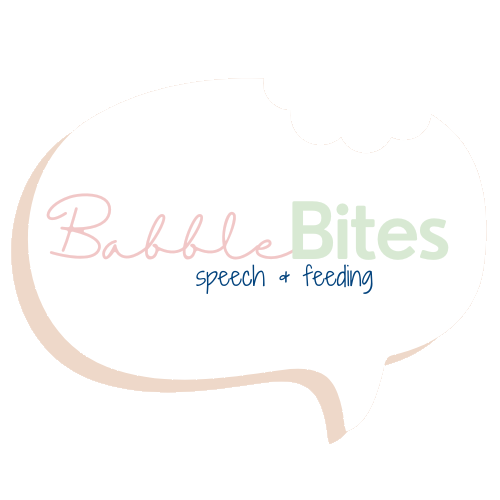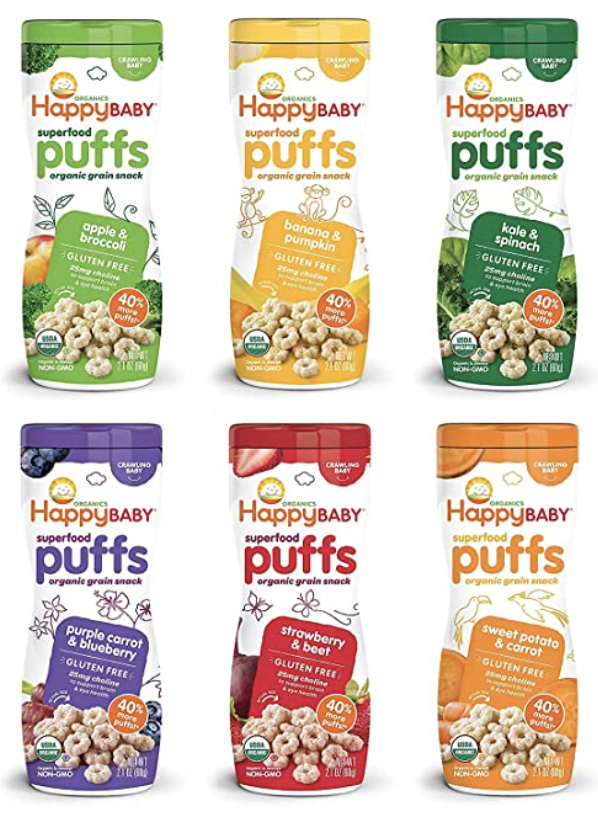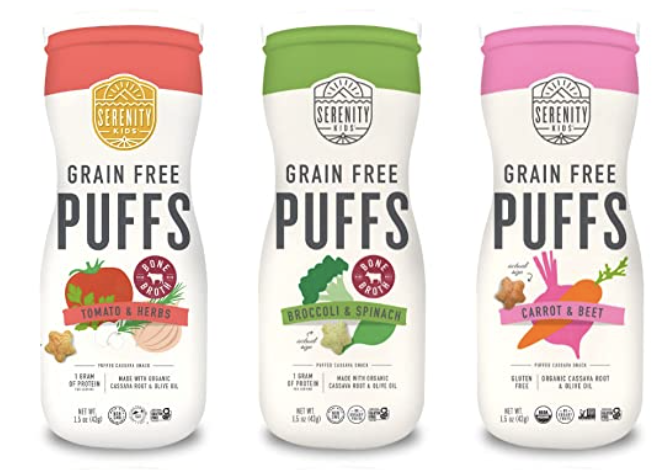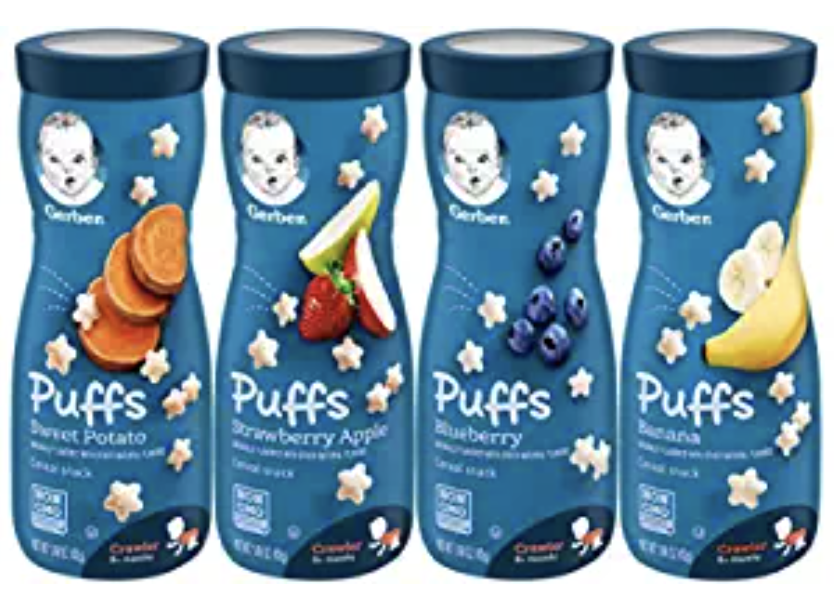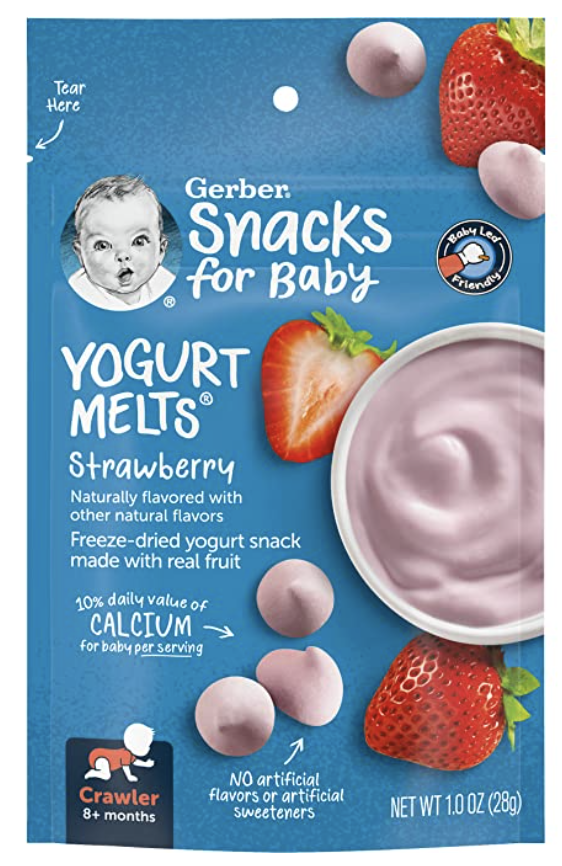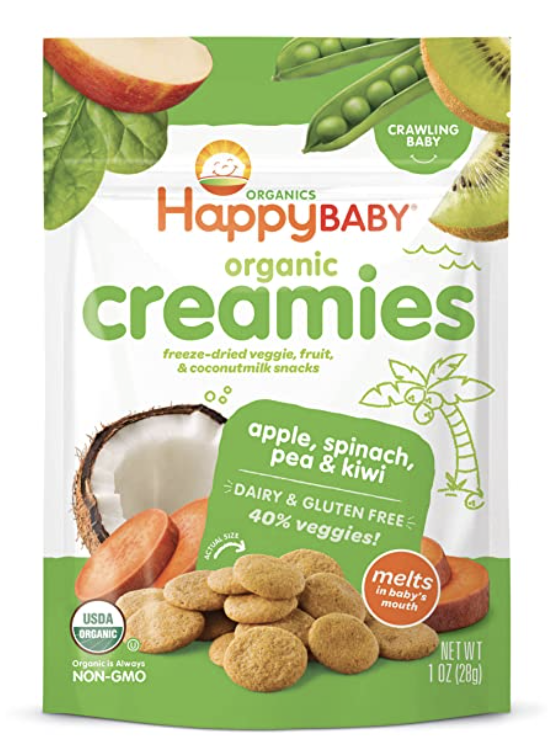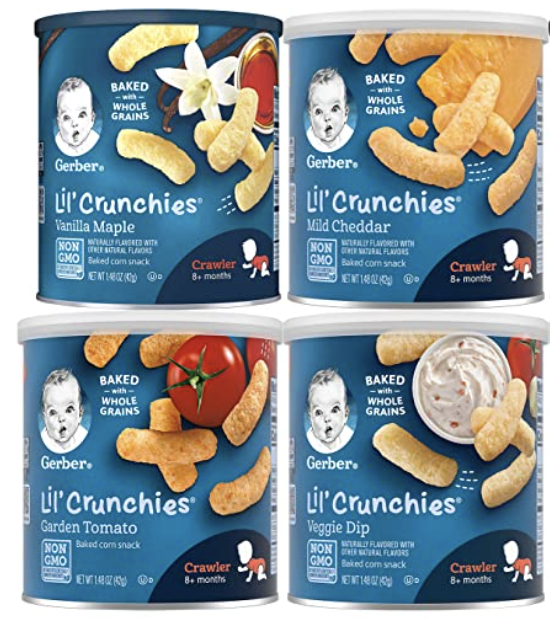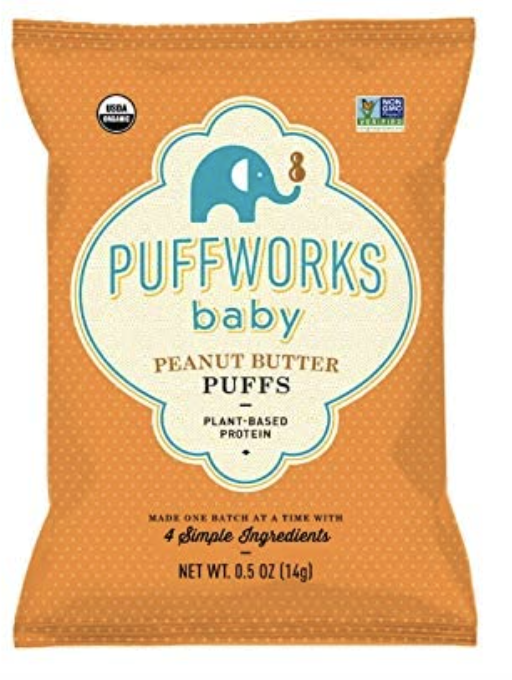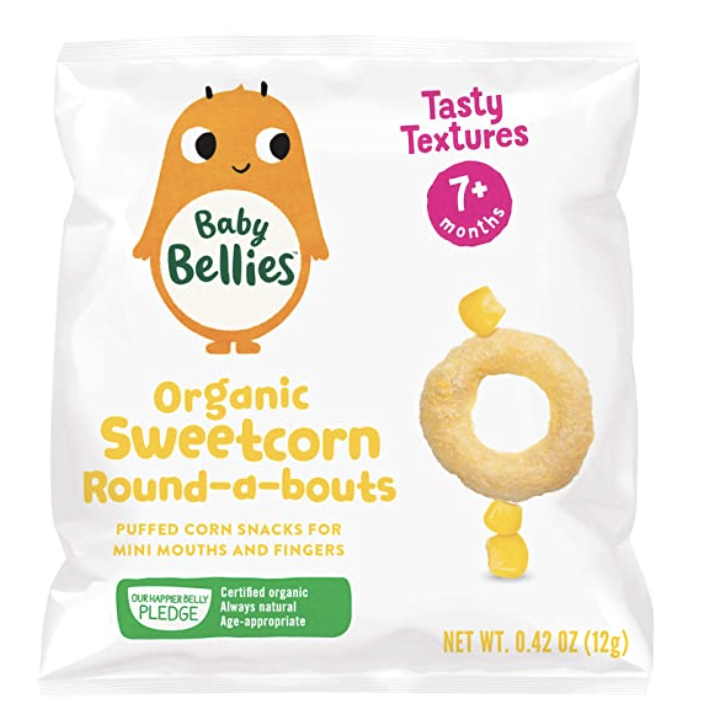The Ultimate List of Meltable Solids
What are meltable solids?
Meltable solids are a food texture that starts hard, and quickly dissolves in the mouth once exposed to saliva. Meltable solids are a great first solid texture to introduce to your baby. They help your baby start learning how to manipulate something solid in their mouth. They melt quickly into a puree-type texture, so your baby should be able to easily swallow it even if they are still getting the hang of what to do with this new texture. Additionally, when crushed, meltable solids should turn into a fine powder-type texture, and smash down on itself staying relatively contained, rather than “exploding” into many small pieces. This helps the the food stay in a cohesive bolus (i.e. “ball” of food) which is easier for baby to control in their mouth, rather than having to keep track of many small pieces in their mouth.
How do meltable solids help teach my baby to eat solid foods?
Babies need to learn to move food to the side into their molar area with the use of their tongue (i.e. tongue lateralization and tongue tip lateralization), as well as to start munching (i.e. early chewing) once the food is in between their gums. It’s best to introduce meltable solids by 7-9 months of age to start introducing your baby to a new texture other than smooth puree, and start to teach chewing. With all new foods, I also highly recommend modeling eating these in front of your baby. Not only because research has shown the positive effects of eating the same foods at the same time as your baby, but also to show baby how to eat the food. Model big open-mouth chewing so baby can see how to move it with their tongue and how to chew it.
Development of oral motor skills needed to transition off of purees
Tongue Lateralization
Meltable solids help teach your baby to manipulate solid foods in their mouth partly due to the tongue lateralization reflex. This reflex causes the tongue to move towards whatever touches the side of the tongue, and helps babies learn to move their food over into their molar area to chew. Since this reflex integrates and disappears around 9 months of age, it’s extremely helpful for the reflex to still be intact when meltable solids are first introduced. This allows the reflex to aid in learning the motor patterns needed to safely move food around the mouth to prepare it to swallow.
Munching
Another reflex that meltable solids can help trigger is the bite reflex. This causes babies to bite up and down, or munch, when pressure is applied to their back gums. Introducing foods that require some chewing (like meltable solids) before this reflex disappears around 9-12 months of age helps babies learn the motor patterns needed to chew.
When should you introduce meltable solids?
Meltable solids are typically introduced shortly after smooth purees, and when they are sitting independently, crawling, have head control, and are able to pick up and bring items to their mouth. As discussed earlier, it’s best to introduce meltable solids by 7-9 months of age in order to take advantage of your baby’s natural reflexes that help them learn to chew and manage new textures. Research has shown there is a critical window of time between 6-9 months of age when children are most receptive to textured foods, and babies should be introduced to foods that require some chewing (e.g. lumpy mashed foods, meltable solids, soft cubes) during this window of time. Meltable solids can be offered in parallel with introducing hard munchables, as well as increasing the texture in your baby’s puree (e.g. thickening with baby cereal, and transitioning to mashed food). Once your baby is starting to move meltable solids to the side and you see them munching (rather than sucking) the meltables, you can start to introduce soft cube/stick textures. To learn more about the steps to introducing solids, check out my post here.
Anything else to consider with meltable solids?
Are they fresh?
It’s always a good idea to pop meltable solids in your own mouth before giving one to your baby, especially if the container has been opened, to ensure they are not stale. When meltable solid foods become stale, they no longer melt quickly, and can cause increased gagging, and even become a choking hazard.
Adult supervision is advised, as with all foods, while baby is eating.
Nutrition
Most meltable solids do not have a ton of calories or nutrients in them, so try not to let baby fill up on these alone. Meltable solids can be included alongside a balanced meal or snack, including fruits, vegetables, proteins, carbohydrates, and healthy fats.
Shapes & Sizes
Meltable solids come in a variety of shapes and sizes. My favorites to start with are small puffs, or long sticks. Sticks are great because your baby can hold onto it in their hand and place it right to the side onto the chewing surface of their gums. The stick shaped meltable solids will then easily elicit both the tongue lateralization and bite reflexes, while giving your baby more control with being able to pull the stick out of their mouth. Small puffs (often star shaped) are good to refine their tongue tip lateralization skills, to not just move the food to the side, but to move it all the way into the back molar area. You can break the puffs into small pieces as first if you notice your baby is having difficulty with the full-size pieces. I recommend introducing a variety of different meltable solids, so your baby is exposed to a wider variety of textures and flavors as they are learning to chew.
What foods are meltable solids?
In general, puffs, teething wafers, and melts are all suitable meltable solids. While cereal-Os like Cheerios are often considered to fall into the same category, they do not tend to melt as quickly as true meltable solids, and also fail the crushing test, as they can “explode” into many small pieces. Cereal is designed to stay crunchy in liquid, rather than melt quickly. If your baby can handle them, great! But if not, try some of these true meltable solids first, and wait to introduce foods like Cheerios until your baby has learned to control food in their mouth better.
Here is a list of my favorite meltable solids for babies:
As an Amazon Associate, we earn from qualifying purchases. This means that at no additional cost to you, if you make a purchase through certain links on this site or any related social media platforms, we may make a small commission. We only feature products that we believe in and use ourselves. Your support means the world to us and allows us to host this website. Thank you!
Baby Bellies Organic Pick-Me Sticks
Long stick shape, perfect for placing right to the side onto the chewing surface, these are one of my favorites to start with. They come in a few different flavors, as well.
Happy Baby Organics Puffs
Flower shaped puffs that come in a larger variety of “superfood” flavors.
Serenity Kids Grain Free Puffs
These puffs are grain, rice, gluten, and nut free, kosher certified, no added sugar, and have some vitamins and protein. They also come in a variety of interesting flavors to expose your baby to.
Gerber Puffs
These star shaped puffs are designed to stick to your babies hands and fingers so they can get them to their mouth, even if they are still working on their pincer grasp.
Gerber Yogurt Melts & Happy Baby Organics Yogis
These are similar in size to the star and flower puffs, but a new texture for baby to try that still melts nice and quickly. Remember to expose baby to a variety of flavors and different meltable solids to help them accept a wide variety of flavors and textures.
Happy Baby Organics Creamies
These ones are dairy and gluten free, and again are a little bit different texture.
Gerber Lil’ Crunchies
These are great to start teaching your baby to take a bite from a larger piece of food, as they’re a bit too big to be placed in the mouth all at once. Your baby may need some help with this at first.
Happy Baby Organic & Gerber Teething Wafers, and Baby Mum-Mums
Help your baby learn to take appropriate sized bites with teether wafers.
Puffworks Baby Peanut Butter Puffs
These are easy to hold stick shapes, meltable, and provide early introduction to peanuts. Research now suggests early introduction to allergens can decrease the development of allergies, but consult your pediatrician first. These also come in almond butter. Be aware these do have some added salt, but significantly less than other peanut puffs.
Baby Bellies Organic Round-a-bouts
These puffs are easy for your baby to grasp and bring to their mouth. They can practice their skills of taking a bite from a larger piece, and may need some help getting the right size bite at first.
Dr. Reva’s Savorease Crispy Melts
These meltable solids were specifically designed for children with pediatric feeding disorders to help build chewing skills, but can benefit all children learning to chew. They are scientifically designed to be the appropriate meltable-solid texture, as well as to have increased calories and nutrients compared to standard meltable solids.
Follow us on Instagram for “bite-sized” information on each blog post:
Click below to pin this post to Pinterest to save for later and share!
This website and information on this blog post is provided for educational purposes only. It is not meant as medical advice, intended to replace a speech-language or feeding assessment, therapy from a speech-language pathologist, or serve as medical or nutritional care for a child. It is recommended that you discuss any concerns or questions you might have with your Speech-Language Pathologist, pediatrician, and medical team, and develop an individualized team plan specifically for your child.
